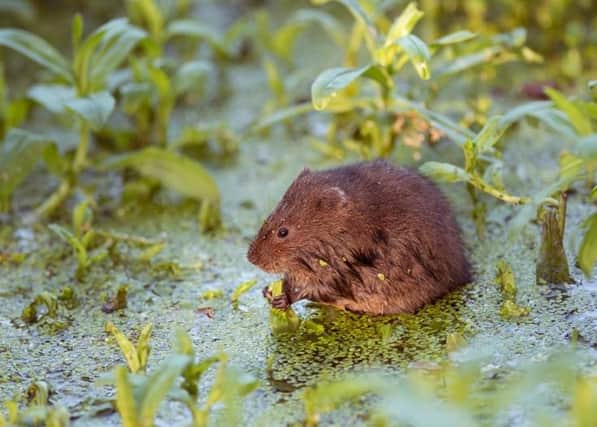Volunteers needed to monitor watervoles


A nationwide water vole survey is now underway, which runs until June 15, and People’s Trust for Endangered Species (PTES) are appealing for volunteers to take part.
The survey is part of PTES’ National Water Vole Monitoring Programme, which was set up in 2015 to try and combat the decline in water vole populations.
Advertisement
Hide AdAdvertisement
Hide AdWater voles underwent one of the most serious declines of any wild mammal in Britain during the 20th century, but with the help of volunteers their fate can be turned around.
Emily Sabin, Water Vole Officer at PTES, explains: “Arguably the best-known water vole is Ratty from The Wind in the Willows. Yet, despite his prominence water voles continue to experience an ongoing decline, are listed as Endangered on the Red List for Britain’s Mammals and are now facing extinction in Britain thanks to historical agricultural intensification, habitat loss and fragmentation, and predation from non-native American mink.
“We’re asking volunteers to find their nearest stream, ditch, river or canal, and look out for water voles, listen for their characteristic ‘plop’ as they dive into the water, or see the signs they leave behind - from footprints and burrows in the riverbank to feeding signs and droppings. Any sightings or signs of American mink should also be recorded.”
No prior experience is necessary, with free online training and Zoom talks so that anyone can find out more and get involved.
Advertisement
Hide AdAdvertisement
Hide AdThere are over 400 pre-selected sites volunteers can choose from, so volunteers need to do is visit a local waterway and record their findings online at www.ptes.org/watervoles.
Last year 216 sites were surveyed, with 85 showing signs of water voles - an increase on 2021’s data, where 116 sites were surveyed with 47 indicating water vole presence.
The data gathered enable conservationists at PTES to see where water voles are living and where they’re no longer living, which dictates where conservation efforts need to be concentrated.
Data from the survey’s eight-year history also show how populations are changing at a local level year on year, which adds to the nationwide, and long-term, picture of how Britain’s water voles are faring.
Advertisement
Hide AdAdvertisement
Hide AdWater voles have glossy dark brown fur and a blunt snout with small, black eyes.
Their ears are rounded and almost hidden, and, unlike rats, they have a furry tail. They were once a common sight along Britain’s inland waterways, but loss and fragmentation of suitable habitat, combined with the arrival of non-native American mink in the 1980s and 1990s, has resulted in their catastrophic decline.
To access the free online training, to sign up to one of PTES’ free Zoom talks or to find out more, visit www.ptes.org/watervoles